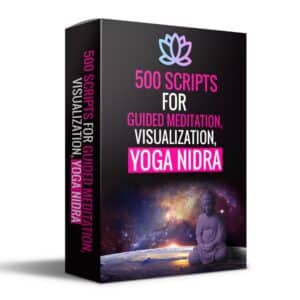Introduction to Mindfulness and Trauma Recovery
Mindfulness is a practice that involves paying attention to the present moment without judgment. It can be particularly beneficial for individuals who have experienced trauma, as it helps to calm the mind, reduce stress, and increase self-awareness and emotional regulation. Trauma can leave you feeling disconnected from your body and trapped in painful memories. Through mindfulness, you can begin to safely reconnect with yourself and your environment, fostering a sense of safety and control.
Understanding Trauma
Trauma can affect your life in profound ways, impacting your thoughts, feelings, behaviors, and physical health. It can make the world seem unsafe and lead to feelings of helplessness. Mindfulness offers a way to gently acknowledge your experience without becoming overwhelmed by it.
Benefits of Mindfulness for Trauma Recovery
- Enhanced Emotional Regulation: Learn to observe your emotions without getting lost in them.
- Increased Self-Awareness: Recognize trauma triggers and respond to them more calmly.
- Reduced Symptoms of Stress and Anxiety: Mindfulness can lower levels of stress and anxiety associated with trauma.
- Improved Physical Health: Regular mindfulness practice can improve sleep, reduce chronic pain, and lower blood pressure.
Mindfulness Exercises for Trauma Recovery
Grounding Exercise: Finding Safety in the Present
- Find a Comfortable Position: Sit or stand in a way that feels secure and grounded.
- Focus on Your Breath: Notice the sensation of breathing in and out. If your mind wanders, gently bring your attention back to your breath.
- Engage Your Senses: Identify:
- 5 things you can see
- 4 things you can feel
- 3 things you can hear
- 2 things you can smell
- 1 thing you can taste
- Reflect on Your Experience: Take a moment to notice how you feel now compared to before the exercise. Remember, there’s no right or wrong way to feel.
Mindful Walking: Connecting with Your Environment
- Choose a Safe Space: This could be indoors or outdoors, wherever you feel most comfortable.
- Walk Slowly: Pay attention to the sensation of your feet touching the ground.
- Use Your Senses: Notice what you see, hear, smell, and feel. If your mind wanders to past or future worries, gently redirect your focus to the present.
- Pause and Reflect: After walking, take a moment to notice any changes in your body or mind.
Body Scan: Reconnecting with Your Body
- Find a Quiet Place: Lie down or sit in a comfortable position.
- Start at Your Feet: Focus on the sensations in your feet. You might feel warmth, coolness, or tingling.
- Move Upward: Gradually shift your attention through each part of your body, up to the top of your head.
- Notice Without Judgment: If you encounter areas of tension or discomfort, acknowledge them without trying to change anything.
Breathing for Relaxation: Calming the Mind
- 4-7-8 Breathing Technique:
- Inhale through your nose for a count of 4.
- Hold your breath for a count of 7.
- Exhale completely through your mouth for a count of 8.
- Repeat: Do this for four breath cycles, or as many as feels comfortable.
- Reflect: Notice any changes in your mind or body.
Incorporating Mindfulness into Daily Life
- Start Small: Even a few minutes of mindfulness each day can be beneficial.
- Create a Routine: Try to practice at the same time each day to build a habit.
- Use Prompts: Set reminders on your phone or use sticky notes to remind you to pause and practice mindfulness.
- Be Patient with Yourself: Mindfulness is a skill that takes time to develop, especially when healing from trauma.
Final Thoughts
Remember, practicing mindfulness is about progress, not perfection. It’s normal for the mind to wander, and it’s okay if you find some exercises more challenging than others. The goal is to bring a kind, nonjudgmental awareness to whatever you’re experiencing. As you continue to practice, you may find that mindfulness becomes a valuable tool in your trauma recovery journey, helping you to live more fully in the present moment.
If you find that mindfulness triggers overwhelming emotions or memories, consider seeking support from a mental health professional trained in trauma-informed care. You don’t have to navigate your healing journey alone.
Discover the transformative power of mindfulness with our carefully curated collection of printable mindfulness worksheets and exercises. Each worksheet is designed to guide you through exercises that cultivate awareness, reduce stress, and promote emotional well-being. From grounding techniques to breathing exercises, these tools are your allies in navigating the complexities of daily life with a sense of calm and presence. Whether you’re a beginner or looking to deepen your practice, these printable resources are tailored to meet your needs.
Save up to 88% with our Bundles
Instant Download
- Digital Download
- Digital file type(s): 1x PDF
- Your files will be available to download once payment is confirmed

![Printable Trauma-Informed Mindfulness Worksheet & Exercises [PDF]](https://guidedmeditationscript.com/wp-content/uploads/2024/02/Printable-Trauma-Informed-Mindfulness-Worksheet-Exercises-PDF.jpg)
![Printable Mindfulness Exercises & Worksheet for Managing Psychosis [PDF]](https://guidedmeditationscript.com/wp-content/uploads/2024/02/Printable-Mindfulness-Exercises-Worksheet-for-Managing-Psychosis-PDF-300x150.jpg)
![Printable Mindfulness Worksheet & Exercises for Emotional Grounding [PDF]](https://guidedmeditationscript.com/wp-content/uploads/2024/02/Printable-Mindfulness-Worksheet-Exercises-for-Emotional-Grounding-PDF-300x150.jpg)
![15,000 Positive Affirmations Bundle [PDF]](https://guidedmeditationscript.com/wp-content/uploads/2024/01/15000-Positive-Affirmations-Bundle-PDF-1-300x300.webp)

![150 Best Hypnosis Scripts [PDF] Bundle](https://guidedmeditationscript.com/wp-content/uploads/2023/11/150-Best-Hypnosis-Scripts-PDF-Bundle-300x300.jpg)

![200 Printable Mindfulness Exercises Worksheets Bundle [PDF]](https://guidedmeditationscript.com/wp-content/uploads/2024/02/200-Printable-Mindfulness-Exercises-Worksheets-Bundle-PDF-300x300.jpg)


![Printable Mindfulness Exercises & Worksheet for Anxiety Relief [PDF]](https://guidedmeditationscript.com/wp-content/uploads/2024/02/Printable-Mindfulness-Exercises-Worksheet-for-Anxiety-Relief-PDF-300x150.jpg)
![Printable Mindfulness Worksheet & Exercises for Managing Rumination [PDF]](https://guidedmeditationscript.com/wp-content/uploads/2024/02/Printable-Mindfulness-Worksheet-Exercises-for-Managing-Rumination-PDF-300x150.jpg)
![Printable Mindfulness Exercises & Worksheet for Enhancing Mindful Communication [PDF]](https://guidedmeditationscript.com/wp-content/uploads/2024/02/Printable-Mindfulness-Exercises-Worksheet-for-Enhancing-Mindful-Communication-PDF-300x150.jpg)